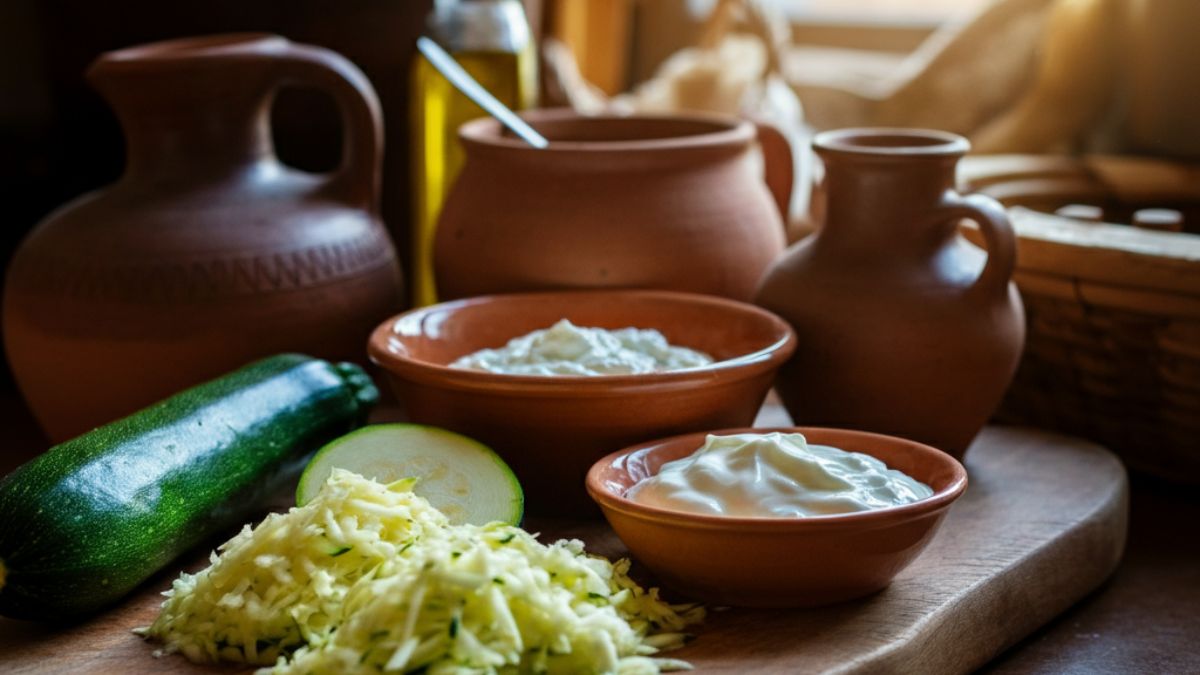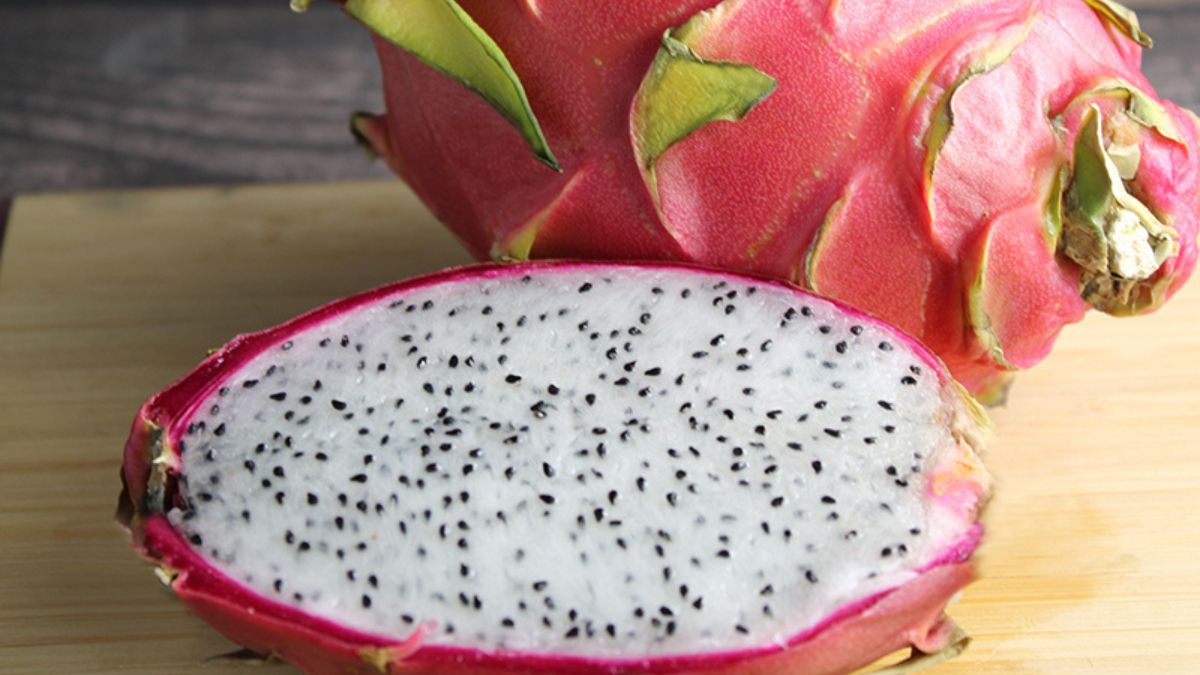Zucchini tzatziki offers all the creamy, garlicky goodness of the original while introducing a slightly different texture and subtle flavor profile. Whether you’re looking to use up abundant summer zucchini or simply want to try something new, this twist on traditional tzatziki will surprise your taste buds and impress your guests.
This guide will walk you through everything you need to know about making authentic Greek zucchini tzatziki, from selecting the right ingredients to mastering the technique that ensures perfect results every time.
What Makes Zucchini Tzatziki Special
Zucchini brings unique qualities to this classic dip that set it apart from its cucumber counterpart. While cucumbers provide a crisp, clean taste, zucchini offers a more mellow, earthy flavor that pairs beautifully with Greek yogurt’s tanginess.
The texture of zucchini tzatziki tends to be slightly creamier than traditional versions. Zucchini has a softer flesh that, when properly prepared, creates a luxurious consistency that clings perfectly to pita bread or fresh vegetables. This makes it an excellent choice for spreading on sandwiches or using as a base for Mediterranean bowls.
From a nutritional standpoint, zucchini brings additional benefits to the table. It’s rich in vitamins A and C, potassium, and folate, while being naturally low in calories. The vegetable also contains antioxidants that support overall health, making your tzatziki both delicious and nutritious.
Essential Ingredients for Authentic Flavor
Creating exceptional zucchini tzatziki starts with selecting quality ingredients. Each component plays a crucial role in achieving that authentic Greek taste.
Greek Yogurt: The foundation of any great tzatziki is thick, creamy Greek yogurt. Choose full-fat varieties for the richest texture, though low-fat options work well too. The yogurt’s acidity balances the other flavors while providing the signature tanginess that makes tzatziki so appealing.
Fresh Zucchini: Select firm, medium-sized zucchini with smooth, unblemished skin. Smaller zucchini tend to have fewer seeds and a more delicate flavor, making them ideal for this preparation. Avoid oversized zucchini, which can be watery and bitter.
Garlic: Fresh garlic is non-negotiable for authentic tzatziki. The amount can be adjusted to taste, but don’t skip it entirely. For a milder flavor, you can remove the green germ from the center of each clove.
Extra Virgin Olive Oil: Use high-quality extra virgin olive oil for the best flavor. Greek olive oil varieties work particularly well, bringing authentic Mediterranean notes to your tzatziki.
Fresh Herbs: Traditional tzatziki calls for fresh dill, though mint also works beautifully. Dried herbs can substitute in a pinch, but fresh herbs provide the bright, aromatic quality that makes this dip shine.
Acid Component: Fresh lemon juice or white wine vinegar adds brightness and helps preserve the tzatziki’s fresh flavor.
Step-by-Step Preparation Method
Making perfect zucchini tzatziki requires attention to a few key techniques, particularly when it comes to removing excess moisture from the zucchini.
Preparing the Zucchini: Start by washing and trimming the ends of your zucchini. You can leave the skin on for added nutrition and color, or peel it for a smoother texture. Grate the zucchini using the large holes of a box grater or a food processor fitted with a grating disc.
Removing Excess Moisture: This step is crucial for preventing watery tzatziki. Place the grated zucchini in a fine-mesh strainer or clean kitchen towel. Sprinkle generously with salt and toss to combine. Let it sit for 30 minutes, then squeeze firmly to extract as much liquid as possible. The more moisture you remove, the better your final product will be.
Building the Base: In a mixing bowl, combine Greek yogurt with minced garlic. Start with less garlic than you think you need—you can always add more. The garlic flavor will intensify as the tzatziki sits.
Adding Flavor Elements: Fold in the drained zucchini, followed by chopped fresh herbs, olive oil, and lemon juice. Season with salt and white pepper to taste. Some recipes include a small amount of grated onion, which adds depth without overwhelming the other flavors.
Final Adjustments: Taste and adjust seasonings as needed. The tzatziki should have a balanced flavor with no single element dominating. If it seems too thick, thin it with a small amount of olive oil or lemon juice.
Serving Suggestions and Pairings
Zucchini tzatziki shines in numerous applications, from traditional Greek preparations to modern fusion dishes. Serve it alongside warm pita bread or pita chips for a classic appetizer that never fails to please.
The dip works beautifully as a sauce for grilled meats, particularly lamb, chicken, or fish. Its cooling properties make it an ideal accompaniment to spiced or barbecued dishes. Try it dolloped over gyros, souvlaki, or grilled vegetables for an authentic Mediterranean experience.
For lighter fare, use zucchini tzatziki as a healthy alternative to mayonnaise-based dips. It pairs wonderfully with fresh vegetable crudités, making it perfect for summer gatherings or healthy snacking.
Consider incorporating it into grain bowls or using it as a spread for sandwiches and wraps. The creamy texture and bright flavor complement everything from roasted vegetables to grilled chicken.
Storage and Make-Ahead Tips
Proper storage ensures your zucchini tzatziki maintains its fresh flavor and creamy texture. Transfer the finished dip to an airtight container and refrigerate immediately. It will keep for up to five days, though it’s best consumed within the first three days for optimal freshness.
The flavors actually improve after a few hours of chilling, as the ingredients have time to meld together. For best results, make your tzatziki at least two hours before serving, or even the night before.
If the tzatziki separates slightly during storage, simply stir it gently before serving. Some separation is normal, especially if any residual moisture remains in the zucchini.
Freezing is not recommended, as the yogurt base doesn’t freeze well and the texture will suffer upon thawing.
Variations and Creative Adaptations
While traditional zucchini tzatziki is delicious on its own, several variations can add interesting twists to this classic preparation.
Herb Variations: Experiment with different herb combinations. Fresh mint creates a cooling effect that’s particularly refreshing in summer. Basil offers an Italian twist that works well in fusion dishes. A combination of dill and parsley provides complexity while staying true to Greek flavors.
Spice Additions: A pinch of sumac adds tartness and a beautiful red color. Toasted cumin seeds bring warmth and earthiness that complements the zucchini’s mild flavor.
Texture Modifications: For a chunkier texture, dice some zucchini instead of grating all of it. This creates interesting textural contrast while maintaining the dip’s creamy base.
Protein Additions: Crumbled feta cheese turns the tzatziki into a more substantial spread. The salty, tangy cheese enhances the Greek character while adding richness.
Bringing Mediterranean Flavors Home
Zucchini tzatziki represents the best of Greek cuisine: simple ingredients transformed into something extraordinary through careful technique and attention to flavor balance. This versatile dip brings the sunny flavors of the Mediterranean to your table while offering a practical way to use seasonal zucchini.
The beauty of this recipe lies in its adaptability and the way it captures the essence of Greek cooking—fresh ingredients, bold flavors, and healthy preparation methods. Whether you’re hosting a dinner party or simply looking for a nutritious snack, zucchini tzatziki delivers satisfaction with every bite.
Start with this basic recipe, then experiment with your own variations to create a version that perfectly suits your taste preferences. Once you master the technique, you’ll find yourself reaching for this recipe whenever you want to add a touch of Mediterranean magic to your meals.











